Classic Interview: Ed Sheeran's bad guitar habits – “The first song I ever learned to play on the guitar was Layla by Eric Clapton. I used to know all the solos for Guns N’ Roses songs”
In this interview from 2012, the pop megastar shares his secret to finding warm acoustics, talks Lego and Yazoo milk, and explains how rapping like Snoop can keep a crowd onside
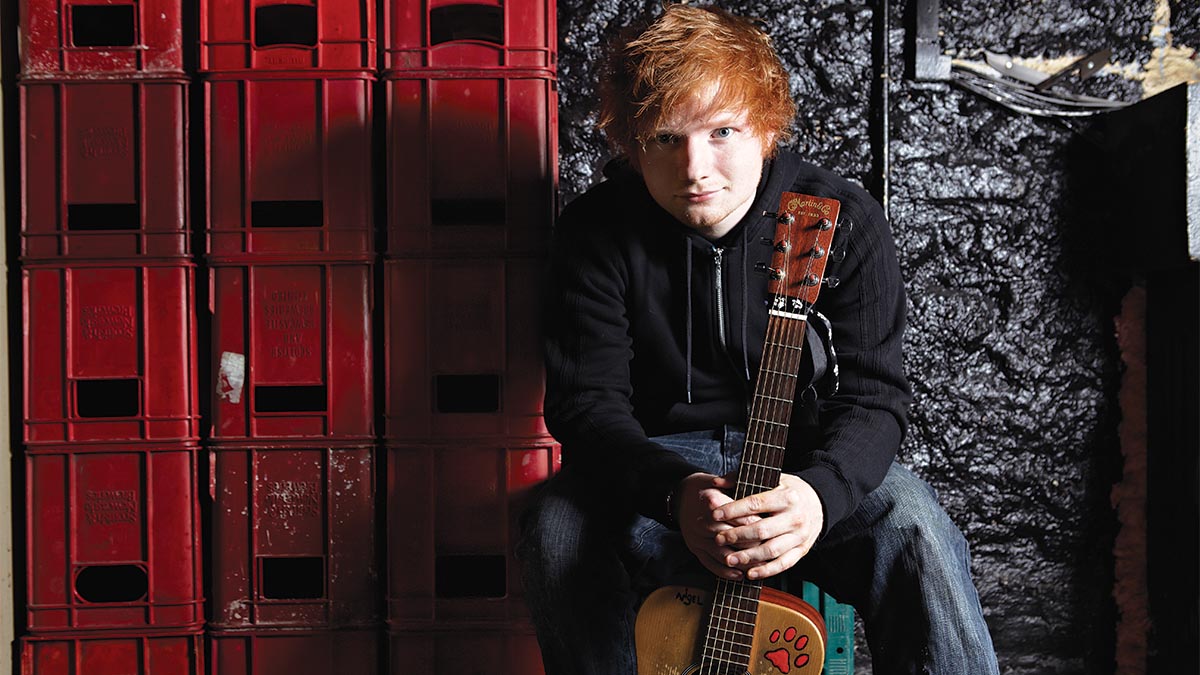
Picture the scene: it's 2012, The Fleece, Bristol, on a hot May afternoon, and a 22-year-old Ed Sheeran is in town to play a charity show at the 450-standing capacity venue.
It's not everyday that a platinum-selling, Ivor Novello-winning artist pitches up to play a venue of this size and this is why fans have been queuing outside all day. Before playing his set, a charity commitment he was only too happy to honour, Sheeran sat down with Total Guitar to talk about his unit-shifting sound from a six-string perspective.
Then an endorser of Martin acoustic guitars, the travel-sized Little Martin his weapon of choice, Sheeran has since moved on to a fruitful partnership with Lowden. His looping station has grown more sophisticated, too.
But his game plan, his approach to playing the instrument and performing has changed little. It's all about finding a warm sound, writing some songs, and above all else, entertaining the crowd...
“The first song I ever learned to play on the guitar was Layla by Eric Clapton. I used to be really into guitar-driven music, only play the electric guitar, and know all the solos for Guns N’ Roses songs and stuff like that.
“I saw Clapton play Layla at the Golden Jubilee 10 years ago. That song is wicked. I got a guitar the next day, and learned the song. 10 years later, I’m doing the Diamond.“
That sort of talk isn’t what you’d expect to hear from a pop troubadour with a penchant for hip-hop, travel acoustics and a looper pedal, but if anyone is going to step up and save the guitar in 2012, it might just be Ed Sheeran.
Get the MusicRadar Newsletter
Want all the hottest music and gear news, reviews, deals, features and more, direct to your inbox? Sign up here.
With physical sales in free fall and guitar-driven music at its lowest commercial ebb since the dawn of rock ’n’ roll, TG steps into Ed Sheeran’s world to find out how a 21-year-old English singer-songwriter picked up an acoustic guitar, gatecrashed the charts, snatched BRIT and Ivor Novello Awards from under Adele’s nose and sold well in excess of a million records in the process…
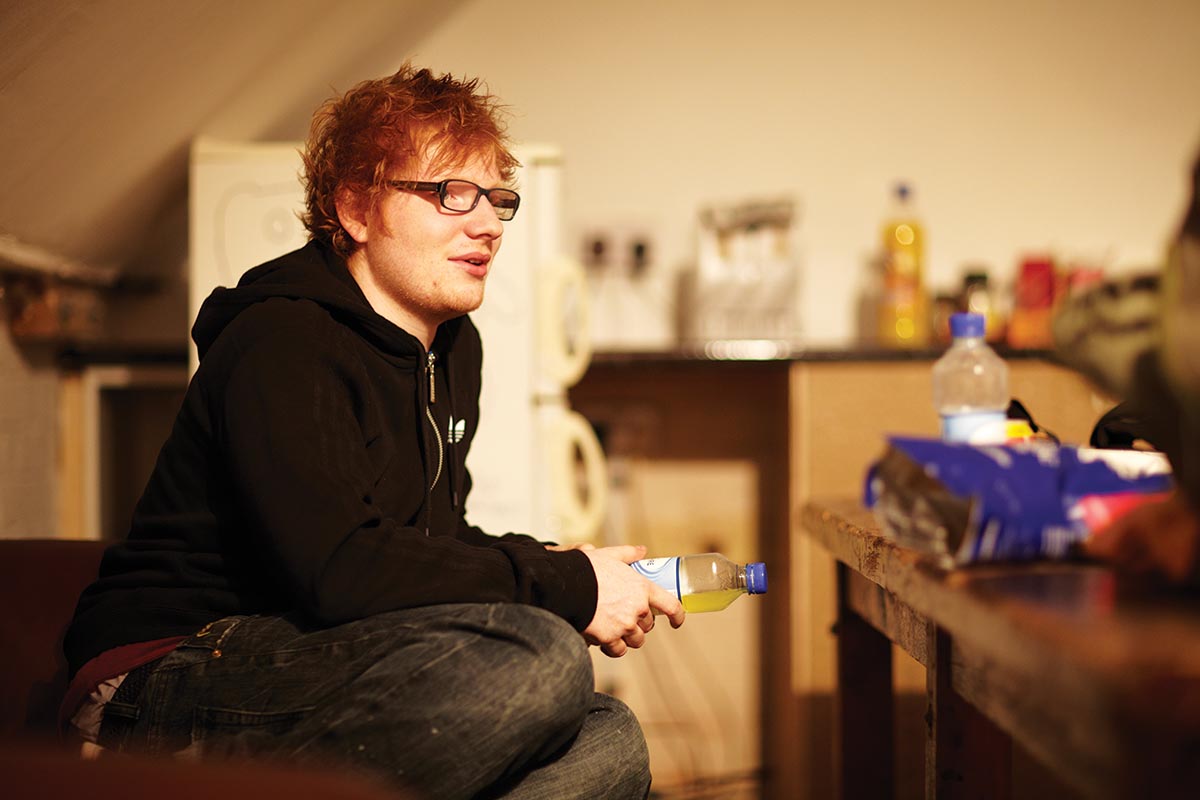
As we pull up outside Bristol Fleece, we can’t help noticing that the scores of people hanging around the venue’s imposing stone exterior don’t exactly look like your regular rock show crowd. With nary a black t-shirt in sight, many of the predominantly teenage, female fans hardcore enough to have turned up a full four hours before showtime are sat basking in the unusually blazing May sun. Some have brought their own acoustics along and are indulging in group singalongs.
There’s a genuine sense of warmth and positivity and it isn’t just the weather. So what brings a million-selling artist to a venue that’s usually reserved for touring acts on their way up and tribute bands such as Hells Bells and The Bon Jovi Experience?
I go a bit nuts with stuff. Before tattoos it was Lego. I had a massive Lego phase and I just made loads of Lego and gave it away to a charity. And what was before that? Yazoo, you know, the chocolate milk drink
Tonight’s performance will see Ed Sheeran keep a promise to take to the stage to raise funds and awareness for One25, a charity that provides support for women trapped in street sex work. It’s a thoroughly worthy cause, and one that resonates with Sheeran, whose hit single, The A Team, was inspired by an encounter with the “dark underbelly” of London when he was 18.
During our photoshoot, Sheeran seems a little uncomfortable in the glare of flashbulbs, but when we sit down backstage to talk, the star is much more relaxed, albeit sore following a recent stint in the tattooist’s chair.
“It’s just had loads of leaves that make a bracelet,” he reveals. “But it hurt. I have a very addictive personality, and I shouldn’t have got a tattoo to begin with. I got one, and then in the past two months I got around 23 [more]. This is why I don’t take drugs or anything, because I go a bit nuts with stuff. Before this it was Lego. I had a massive Lego phase and I just made loads of Lego and gave it away to a charity. And what was before that? Yazoo, you know, the chocolate milk drink?”
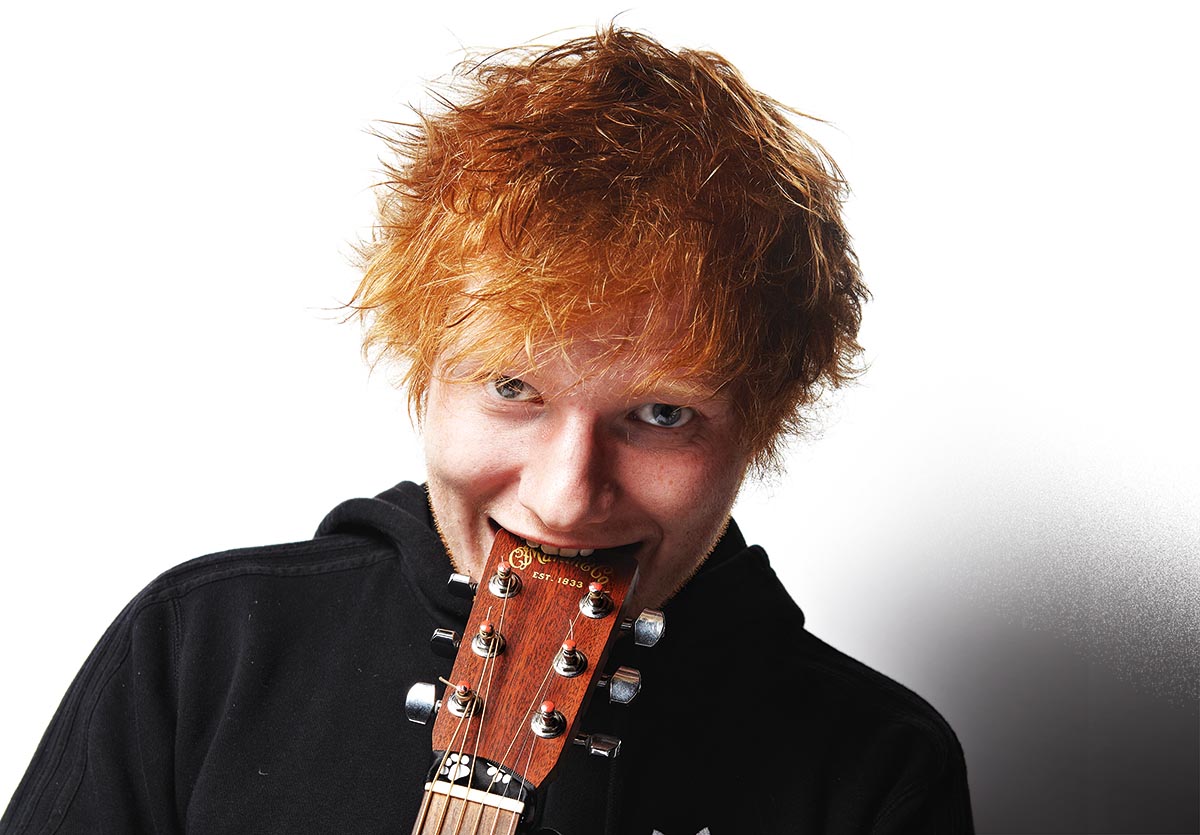
It’s certainly a less sinister catalogue of addictions than many famous musicians would boast. But that’s far from being the only atypical thing about Ed Sheeran the guitarist. Conversation turns to his choice of instrument, the diminutive Martin LX1E Little Martin travel acoustic, and it turns out that his initial attraction to the model stemmed as much from practicality as it did any sonic considerations.
“Martin don’t really make sh** guitars so it helps that it sounds good,” Sheeran laughs. “But I lived without a home for quite a while – going on trains, sleeping on sofas – playing around the country. You can fit a lot of clothes in the guitar’s case. And in the little pouch you have your toothbrush and toothpaste and phone chargers. So it was my suitcase with a guitar in it, and that was very convenient.”
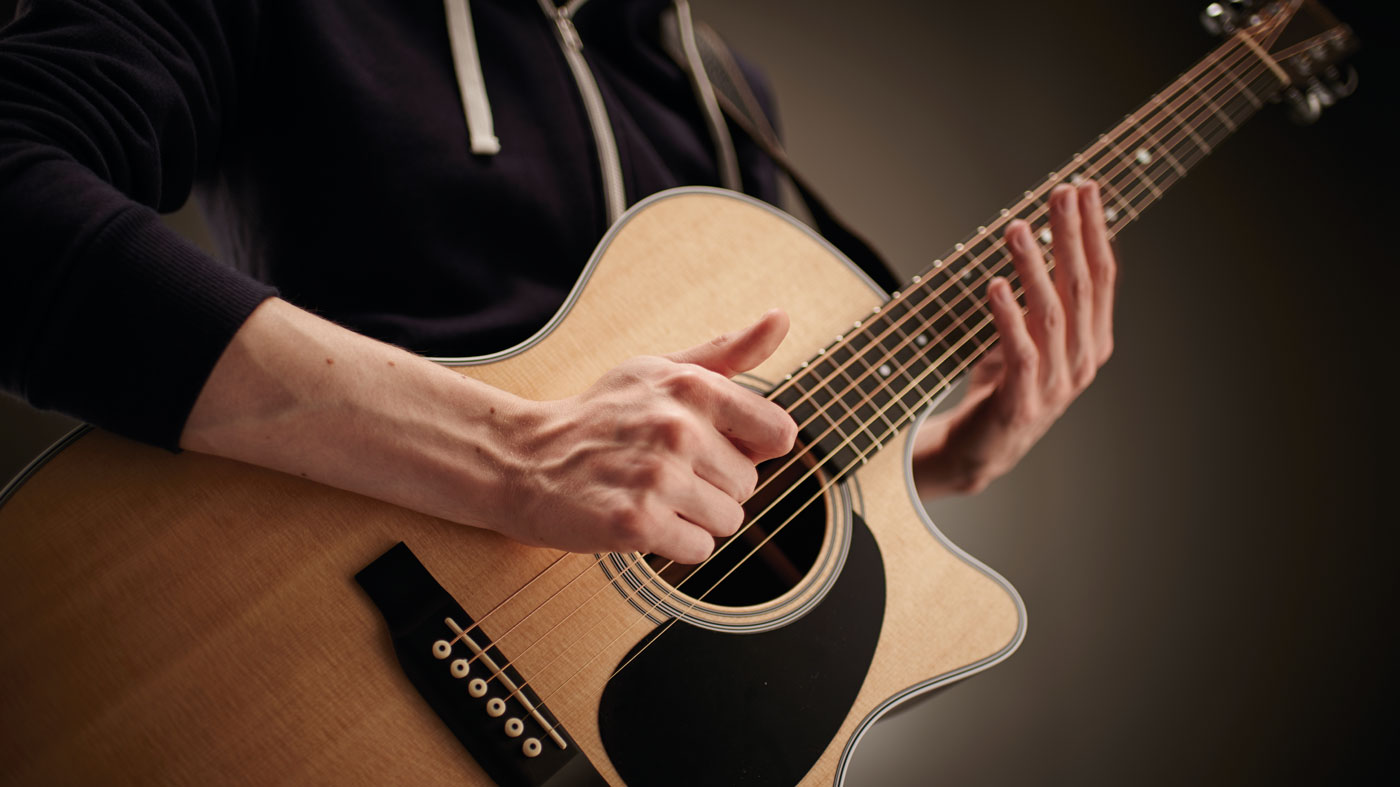
Sheeran played an incredible 312 gigs in 2009, so he knows a thing or two about getting his Little Martins (he owns four, and has brought two for tonight’s show) to sound good.
“I like my sound to be really fat and warm,” Sheeran explains. “I know some people like a very jagged, trebly sound. But I’m into the warmth. Usually, if you have a bit of bottom end and a lot of mid on a guitar, with just a tiny bit of top end, that will give you a warmish sound. The way I test it is, I beat the bridge like a drum until it makes a kick drum sound. Because I do a lot of percussion on the guitar, that’s usually when I know that the sound is good.”

Given the explosion in the popularity among younger musicians of open mic shows, we ask Ed if he has any advice for TG readers making their own forays into live acoustic performance.
“The thing I had to realise, was – be it your friends, your family or strangers – no-one actually goes to gigs to hear your songs,” Sheeran admits. “They go to be entertained, they want to have a good night out. So the trick, for me, was to not just play my songs, but to give them a show and entertain.
No one actually goes to gigs to hear your songs. They go to be entertained, they want to have a good night out
“One of my tunes called You Need Me, I Don’t Need You has a laid-back verse in it and 50 Cent verse, and I do a long rap in it. Even [doing] stuff like that where people will think, ‘OK, I recognise that a little bit’… Then you go back into your own song, and you have tricked them a little bit to catch their attention.
“Or splitting the crowd into two,” he adds, “and getting one half of the crowd singing one bit, and the other half singing the other bit, putting them in competition with each other. That gets them to sing, which in turn gets them to watch. Just remember that at an open mic night you are not there to showcase your songs, you are there to entertain.”
Sheeran’s knowledge on this subject is the hard-won result of hundreds of live shows, so where was his toughest crowd yet?
“I did a gig in Inglewood in Los Angeles,” Sheeran remembers, “at a place called The Savoy Entertainment Center. Inglewood is in quite a rough area. So I got there, and it was around 400 people, all seated. It was a comedy and poetry night, no music. So you have a whole crowd that are there to watch comedy and poetry.
“And the guy before me was a comedian and I had to set up my stuff onstage before him. He thought I was the stagehand, just a guy helping out. So he was ripping into me, and being like, ‘Who the f*** are you, man?’ And then I got up to play, and suddenly it was like, ‘OK, what’s going to happen here?’
I got into Damien Rice and realised you could do singing and guitar – and you don’t have to have a band behind you. I got an acoustic and I haven’t really looked back since
“So I opened up with You Need Me, I Don’t Need You, and instead of dropping a 50 Cent verse into it, I dropped a Snoop Dogg verse, who is from Inglewood [according to TG’s resident gangsta rap expert, Snoop actually hails from Long Beach]. Seeing a slightly chubby, ginger white kid drop a verse with the right timing, I guess that’s what won people onside. That was quite a tough gig, because it just wasn’t my crowd. But that’s what you learn from, you learn to make them your crowd.”
Despite the hip-hop rhymes, Sheeran’s formative influences were the likes of Clapton and Guns N’ Roses, but it was discovering another solo singer-songwriter that made him swap the electric guitar for the acoustic.
“I got into Damien Rice and realised you could do singing and guitar – and you don’t have to have a band behind you. You could, technically, just do that on your own. So I got an acoustic and I haven’t really looked back since.”
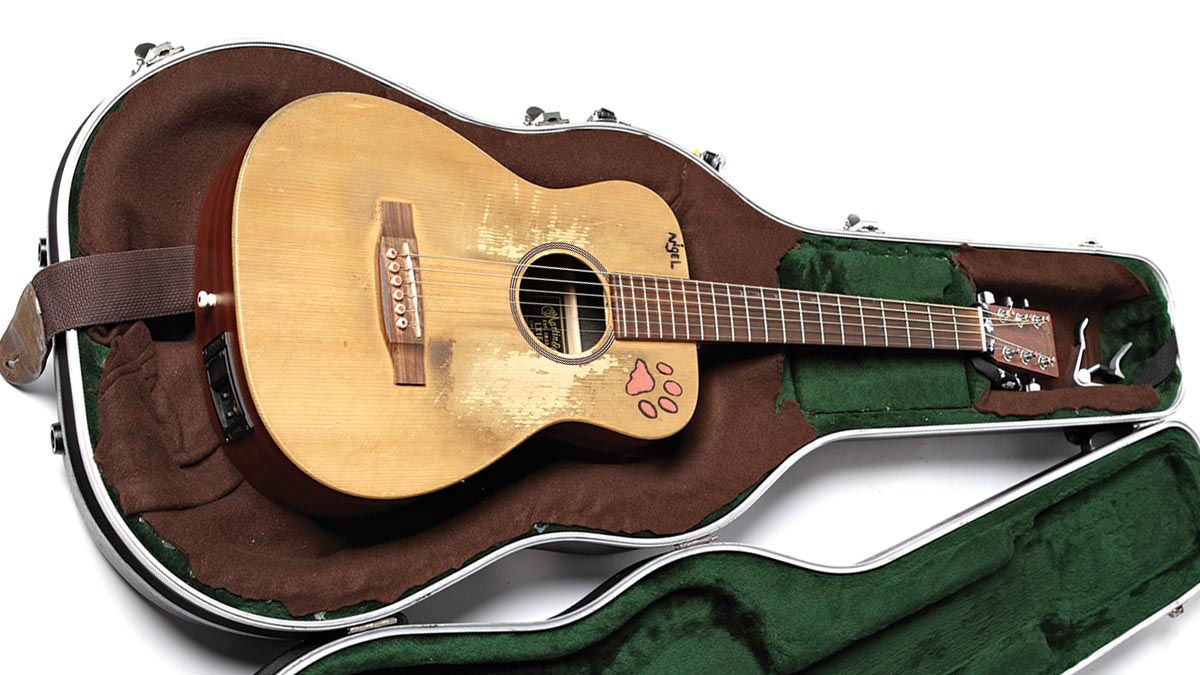
Tellingly, even at a young age, the award-winning songwriter was taking his first steps into the world of composition. “When you start writing your own songs, you use other people’s chords and melodies. If you’re 11 years old, you’re allowed to plagiarize! The first song that I wrote was basically a Green Day chord sequence that was quite a simple thing to play.”
These days, Sheeran’s writing is influenced by “a lot of rap music and a lot of folk music” from Van Morrison to Eminem, and although he claims that his approach is “not too complicated or scientific”, it clearly pushes the right buttons for hundreds of thousands of fans, and indeed many of his music industry peers.
Just a few days before tonight’s Bristol show, The A Team won ‘Best Song Musically & Lyrically’ at the prestigious Ivor Novello awards, judged by a panel of professional songwriters. This kind of recognition obviously means a lot to a songwriter who, lest we forget, was just 18 years old when he penned the song in question.
“I think that’s the one award, as an artist, that I have always chased,” Sheeran confides. “I expected to get it a lot further down the line. So to get it for the first song that I ever released was a fantastic feeling. I mean, a room full of people that I admire and look up to voted for me to win it. It’s the perfect award for any artist. I’m honoured to have it.” And we’re willing to bet that it won’t be his last.
Chris Vinnicombe worked with us here on the MusicRadar team from the site's initial launch way back in 2007, and also contributed to Guitarist magazine as Features Editor until 2014, as well as Total Guitar magazine, amongst others. These days he can be found at Gibson Guitars, where he is editor-in-chief.
“Every note counts and fits perfectly”: Kirk Hammett names his best Metallica solo – and no, it’s not One or Master Of Puppets
“I can write anything... Just tell me what you want. You want death metal in C? Okay, here it is. A little country and western? Reggae, blues, whatever”: Yngwie Malmsteen on classical epiphanies, modern art and why he embraces the cliff edge









